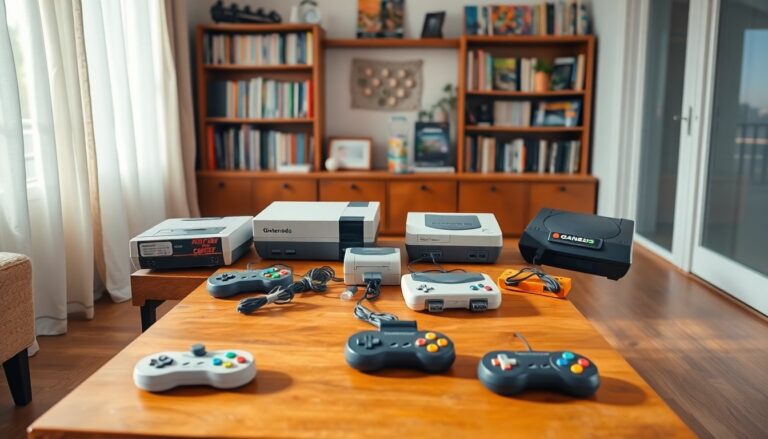Argomenti trattati
The world of gaming has evolved dramatically over the past few decades, yet one phenomenon continues to capture the hearts of players: retro gaming consoles. These classic systems, which once dominated living rooms, have seen a remarkable resurgence in popularity. From the iconic Nintendo Entertainment System (NES) to the classic Sega Genesis, these devices evoke nostalgia and offer a unique gaming experience that modern consoles sometimes struggle to replicate.
This article explores the factors driving the retro gaming trend, the significance of these consoles in the current gaming landscape, and their impact on both new and seasoned gamers.
The allure of nostalgia
One primary reason for the revival of retro gaming consoles is the powerful emotional connection they foster. For many players, these systems represent a simpler time in gaming history, where the focus was primarily on gameplay rather than graphics or complex storylines. The nostalgia associated with these consoles often brings back fond memories of childhood, making them appealing to adults who grew up during the golden age of gaming.
The impact of retro titles on modern gaming
Many retro games, including Super Mario Bros., The Legend of Zelda, and Pac-Man, continue to influence the design of contemporary games. Their straightforward mechanics and engaging gameplay experiences are often cited as inspirations for modern developers. The simplicity of these games allows new players to easily understand and enjoy them, regardless of age or skill level.
Additionally, the rise of independent game developers has led to a resurgence of 8-bit and 16-bit aesthetics, further bridging the gap between retro and modern gaming. With titles like Celeste and Shovel Knight, players can experience the charm of retro gaming while enjoying modern design sensibilities.
The role of technology in retro gaming
Advancements in technology have played a significant role in the revival of retro gaming consoles. Companies have begun to re-release classic systems with updated hardware, allowing gamers to experience their favorite titles in new ways. For instance, the Nintendo Classic Mini series and the Sega Genesis Mini exemplify how manufacturers capitalize on nostalgia while providing enhancements such as HDMI output and a selection of pre-installed games.
Emulation and the rise of retro gaming communities
Another contributing factor to the retro gaming phenomenon is the accessibility provided by emulation. Software emulators allow players to experience classic games on modern devices, from PCs to smartphones. This accessibility has led to vibrant retro gaming communities where enthusiasts share their love for classic games, trade tips, and even develop their own homebrew titles.
These communities foster a sense of belonging and keep the spirit of retro gaming alive. Online forums and social media groups provide platforms for discussions about gaming history, strategies, and hardware modifications, enriching the retro gaming experience.
The future of retro gaming
Looking into the future, it is evident that the allure of retro gaming consoles will continue to thrive. The blend of nostalgia, community, and technological advancements has created a perfect storm for the retro gaming movement. Manufacturers are likely to keep producing mini versions of classic consoles, while indie developers will continue crafting new experiences inspired by the games of yesteryear.
As younger generations discover these classic systems, the cycle of retro gaming will likely endure, ensuring that these beloved consoles remain relevant in the ever-evolving gaming landscape. The charm of retro gaming consoles proves that while technology may change, the essence of gaming remains timeless.

